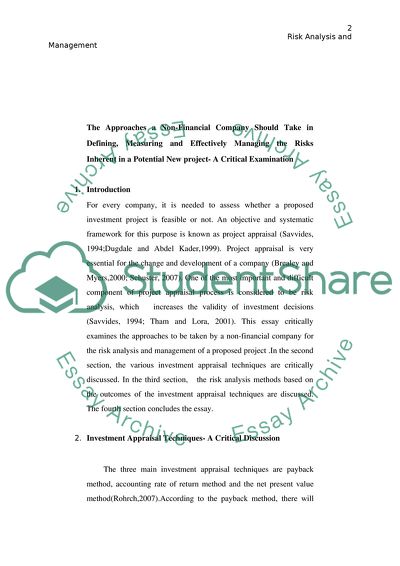Cite this document
(The Approaches a Non-Financial Company Should Take in Managing Risk In Coursework, n.d.)
The Approaches a Non-Financial Company Should Take in Managing Risk In Coursework. Retrieved from https://studentshare.org/finance-accounting/1732482-finance-essay-critically-discuss-the-approaches-a-non-financial-company-should-take-in-defining-measuring-and-effectively-managing-the-risks-inherent-in-a-potential-new-project
The Approaches a Non-Financial Company Should Take in Managing Risk In Coursework. Retrieved from https://studentshare.org/finance-accounting/1732482-finance-essay-critically-discuss-the-approaches-a-non-financial-company-should-take-in-defining-measuring-and-effectively-managing-the-risks-inherent-in-a-potential-new-project
(The Approaches a Non-Financial Company Should Take in Managing Risk In Coursework)
The Approaches a Non-Financial Company Should Take in Managing Risk In Coursework. https://studentshare.org/finance-accounting/1732482-finance-essay-critically-discuss-the-approaches-a-non-financial-company-should-take-in-defining-measuring-and-effectively-managing-the-risks-inherent-in-a-potential-new-project.
The Approaches a Non-Financial Company Should Take in Managing Risk In Coursework. https://studentshare.org/finance-accounting/1732482-finance-essay-critically-discuss-the-approaches-a-non-financial-company-should-take-in-defining-measuring-and-effectively-managing-the-risks-inherent-in-a-potential-new-project.
“The Approaches a Non-Financial Company Should Take in Managing Risk In Coursework”. https://studentshare.org/finance-accounting/1732482-finance-essay-critically-discuss-the-approaches-a-non-financial-company-should-take-in-defining-measuring-and-effectively-managing-the-risks-inherent-in-a-potential-new-project.


